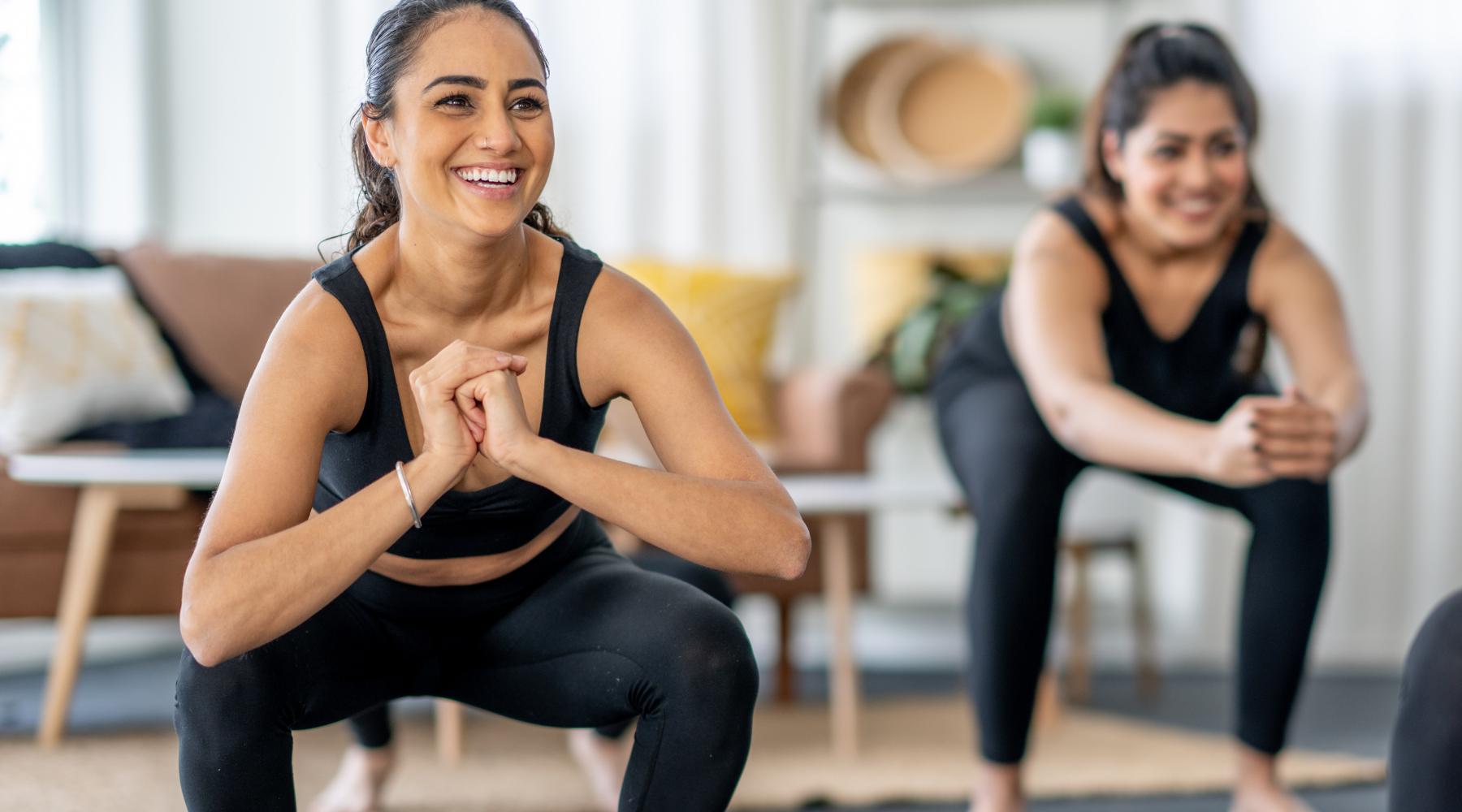Walking is one of the simplest yet most effective forms of exercise. Not only is it highly accessible, but it also boasts a wide range of physical and mental health benefits. In this article, we will delve into the various advantages of walking workouts and explore the key components of an effective routine. Whether you are a beginner or a seasoned walker, this guide will help you design your ultimate walking workout routine for maximum results.
Main Keypoints
- Physical and Mental Health Benefits: Walking offers numerous physical benefits such as improved cardiovascular health, muscle strength, and reduced risk of chronic diseases. It also enhances mental well-being by reducing stress, anxiety, and depression.
- Components of an Effective Walking Workout: Effective walking workouts include proper warm-up and cool-down, incorporating interval training, and gradually increasing speed and distance to improve cardiovascular fitness and endurance.
- Designing and Adjusting Your Walking Routine: Setting realistic goals, creating a weekly schedule, and adjusting your routine for progress are crucial. Consistency and gradual progression help achieve maximum results from walking workouts.
Understanding the Benefits of Walking Workouts
Physical Health Advantages of Walking
Walking offers numerous physical health benefits that can improve your overall well-being. Firstly, it is a great way to maintain a healthy weight and manage body composition. Regular walking can also help strengthen your bones and muscles, reducing the risk of osteoporosis and improving mobility. It also boosts cardiovascular health by increasing heart rate and improving blood circulation.
In addition to these benefits, walking is a low-impact exercise that puts less stress on your joints compared to other forms of exercise. This makes it a suitable option for individuals with joint pain or arthritis. Furthermore, research has shown that walking regularly can help reduce the risk of chronic conditions such as type 2 diabetes, high blood pressure, and certain types of cancer.
But did you know that walking can also improve your immune system? Regular physical activity, including walking, can enhance the immune response, making you less susceptible to infections and illnesses. So, lace up your walking shoes and give your immune system a boost!

Mental Health Benefits of Regular Walking
Walking not only benefits your physical health but also has a positive impact on your mental well-being. Engaging in regular walking workouts can help reduce stress, anxiety, and symptoms of depression. It promotes the release of endorphins, which are natural mood boosters, leaving you feeling happier and more relaxed.
Furthermore, walking in nature or green spaces enhances the mental health benefits even more. Studies have shown that being in nature can improve cognitive function, reduce mental fatigue, and increase attention span. So, try to incorporate walks in parks, forests, or any natural environment available to you for an added mental health boost.
But that's not all! Walking can also improve your creativity. Taking a stroll can stimulate creative thinking and problem-solving abilities. So, the next time you find yourself stuck on a project or in need of inspiration, take a break and go for a walk. You might just come back with a fresh perspective and new ideas!
Components of an Effective Walking Workout
Importance of Warm-Up and Cool-Down
Before starting any workout, it is crucial to warm up your muscles and prepare your body for exercise. A dynamic warm-up involving stretches and light movements will help increase your heart rate, improve circulation, and loosen up your muscles. This not only helps prevent injury but also enhances your overall performance during the workout.
During the warm-up, you can incorporate exercises such as leg swings, arm circles, and lunges to activate the major muscle groups involved in walking. This will not only increase blood flow to those muscles but also improve their flexibility, making your walking stride more efficient.
Similarly, after your walk, dedicating a few minutes to cool down is equally important. Cooling down allows your heart rate and blood pressure to gradually return to normal, preventing dizziness or fainting. Stretching your major muscle groups during the cool-down helps reduce muscle soreness and stiffness, promoting a quicker recovery.

Incorporating Intervals in Your Walk
Intervals involve alternating between periods of higher intensity and periods of moderate or low intensity. Incorporating intervals in your walking workouts can take your fitness level up a notch. Not only does it help you burn more calories, but it also improves your cardiovascular fitness.
A simple interval workout could be alternating between a brisk walk and a leisurely stroll. For example, walk at a brisk pace for 2 minutes, then slow down and enjoy a casual walk for 1 minute. Repeat this pattern throughout your workout to add variety and challenge to your routine.
Intervals can be customized to fit your fitness level and goals. You can increase the duration of the high-intensity periods as you progress, or even incorporate inclines or stairs to further challenge yourself. The key is to find the right balance between pushing yourself and allowing for adequate recovery.
The Role of Speed and Distance
Both speed and distance play a significant role in the effectiveness of your walking workout. Gradually increasing your walking speed over time can improve your cardiovascular fitness and help you achieve your fitness goals. However, it is important to find a pace that challenges you without causing excessive strain on your body.
Increasing the distance you cover can also help boost endurance and calorie burn. Setting distance goals can provide you with a sense of accomplishment and motivation. You can track your progress by using a pedometer or a fitness app that measures the distance you walk.
However, it is important to listen to your body and find a balance that works for you. Pushing yourself too hard or increasing speed and distance too quickly can lead to burnout or injury. Set realistic goals and allow yourself to progress gradually over time. Remember, consistency is key when it comes to reaping the benefits of walking as a form of exercise.

Designing Your Ultimate Walking Workout Routine
Setting Your Walking Goals
Before starting any exercise program, it is essential to set clear and realistic goals. Determine what you want to achieve through your walking workouts. It could be weight loss, improved cardiovascular fitness, stress reduction, or simply getting outdoors and enjoying nature.
Once you have identified your goals, break them down into smaller, achievable milestones. This will help you stay motivated and track your progress. Remember, each person's goals are unique, so focus on what is important to you and what will make you feel accomplished.
For example, if your goal is weight loss, you might set a milestone of walking for 30 minutes, five times a week, for the first month. Then, gradually increase the duration or intensity of your walks as you progress.
Creating a Weekly Walking Schedule
Consistency is key when it comes to reaping the benefits of walking workouts. Create a weekly walking schedule that fits into your lifestyle and commitments. Aim for at least 150 minutes of moderate-intensity walking per week, spread across several days.
It's important to find a routine that works for you. Some may prefer morning walks to kickstart the day, while others may find evening walks more invigorating. Find the time that suits you best and make it a regular part of your daily or weekly routine.
Consider incorporating other activities into your walking routine to add variety and challenge different muscle groups. For example, you could alternate between brisk walking and jogging or include bodyweight exercises like lunges or squats during your walk.

Adjusting Your Routine for Progress
As you progress in your walking workouts, it is important to adjust your routine to continue challenging your body and achieving results. Gradually increase the duration, intensity, or distance of your walks to keep pushing yourself. Introducing new routes or terrains can also add variety and keep things interesting.
Remember to listen to your body and rest when needed. Walking should be an enjoyable activity, so avoid overexertion or feeling obligated to stick to a rigid routine. Be flexible and adapt your routine to your changing needs and circumstances.
Additionally, consider tracking your progress using a fitness app or a pedometer. This can help you monitor your steps, distance, and calories burned, providing you with tangible data to stay motivated and make adjustments to your routine if necessary.
Lastly, don't forget to stay hydrated during your walks and wear comfortable shoes to prevent any discomfort or injuries. Enjoy the journey of designing your ultimate walking workout routine and embrace the numerous physical and mental benefits it can bring to your life!
Essential Gear for Walking Workouts
Choosing the Right Footwear
Investing in a pair of comfortable and supportive walking shoes is crucial to ensure a pleasant walking experience and prevent foot problems. Look for shoes that provide adequate cushioning, arch support, and a good fit. Remember that different individuals may have different foot types, so choose shoes that suit your specific needs.
Weather-Appropriate Clothing for Walking
When walking outdoors, it's essential to dress appropriately for the weather conditions. During warmer months, opt for lightweight and breathable fabrics that wick away moisture. In colder weather, layer clothing to stay warm while allowing flexibility for temperature changes. Don't forget to protect yourself from the sun by wearing a hat and applying sunscreen.
Useful Walking Accessories
While walking is a simple exercise that requires minimal gear, there are a few accessories that can enhance your experience. Consider investing in a good quality fitness tracker or pedometer to monitor your steps and overall progress. Wearing comfortable socks, using a sun visor, or carrying a water bottle are small additions that can make your walks more enjoyable.
Walking workouts offer an array of physical and mental health benefits. By understanding these advantages and incorporating the key components into your routine, you can design the ultimate walking workout for maximum results. So lace up your walking shoes, embrace the great outdoors, and embark on a journey towards improved fitness and well-being!
FAQs
What are the main physical benefits of walking workouts?
Walking workouts improve cardiovascular health, help maintain a healthy weight, strengthen muscles and bones, and reduce the risk of chronic diseases such as diabetes and high blood pressure.
How does walking benefit mental health?
Walking helps reduce stress, anxiety, and symptoms of depression by promoting the release of endorphins. It also enhances cognitive function, creativity, and overall psychological well-being.
What should I include in my walking workout routine?
A comprehensive walking workout routine should include a proper warm-up, interval training, increasing speed and distance over time, and a cool-down period to prevent injury and enhance performance.
How can I track my progress in walking workouts?
Use a fitness tracker or smartphone app to monitor your daily steps, distance, and overall progress. Setting and tracking realistic fitness goals can keep you motivated and ensure consistent improvement.





